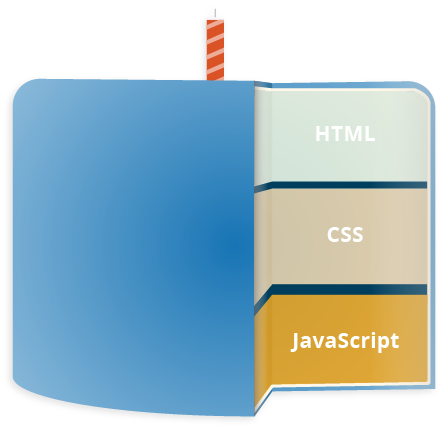6.6 KiB
How JavaScript became a serious programming language
From humble beginnings as a way to make websites pretty, JavaScript has
been transformed into a serious programming language.

JavaScript's humble start began in 1995, when it was created in just 10 days by Brendan Eich, then an employee with Netscape Communications Corporation. JavaScript has come a long way since then, from a tool to make websites pretty to a serious programming language.
In its early days, JavaScript was considered a visual tool that made websites a little more fun and attractive. Languages like Jakarta Server Pages (JSP; formerly JavaServer Pages) used to do all the heavy lifting on rendered web pages, and JavaScript was used to create basic interactions, visual enhancements, and animations.
For a long time, the demarcations between HTML, CSS, and JavaScript were not clear. Frontend development primarily consists of HTML, CSS, and JavaScript, forming a "layer cake" of standard web technologies.
The "layer cake" of standard web technologies (Mozilla Developers Network, CC BY-SA 4.0)
HTML and CSS provide structure, format, and style to content. JavaScript comes into play once a web page does something beyond displaying static content. Ecma International develops JavaScript specifications, and the World Wide Web Consortium (W3C) develops HTML and CSS specifications.
How JavaScript gained prominence
There is a long history behind how JavaScript came to be the most popular programming language. Back in the 1990s, Java was king, and comparisons to it were inevitable. Many engineers thought JavaScript was not a good programming language due to lack of support for object-oriented programming. Even though it was not evident, JavaScript's object-model and functional features were already present in its first version.
After JavaScript's rushed release in 1995, Netscape submitted it to the European Computer Manufacturers Association (ECMA) International for standardization. This led to ECMAScript, a JavaScript standard meant to ensure interoperability of web pages across different web browsers. ECMAScript 1 came out in June 1997 and helped to advance the standardization of JavaScript.
During this time, PHP and JSP became popular server-side language choices. JSP had gained prominence as the preferred alternative to Common Gateway Interface (CGI) because it enabled embedding Java code in HTML. While it was popular, developers found it unnatural to have Java inside HTML. In addition, even for the simplest text change on HTML, JSP had to undergo a time-consuming lifecycle. In today's microservice world, JSP-oriented pages are considered technical debt.
PHP works similarly to JSP but the PHP code is processed as a Common Gateway Interface (CGI) executable. PHP-based web applications are easier to deploy than those based on JSP. Overall, it is easier to get up and running with PHP. Today, PHP and JavaScript are one of the most popular combinations for creating dynamic websites. PHP serves as the server-side scripting and JavaScript as the client-side scripting.
JavaScript's adoption grew with the release of jQuery, a multi-purpose JavaScript library that simplifies tedious Document Object Model (DOM) management, event handling, and Ajax, in 2006.
The turning point for JavaScript came in 2009 when Node.js was released. Developers could now write server-side scripting with JavaScript. Closely following were frameworks like Backbone.js and AngularJS, both released in 2010. This led to the concept of full-stack development using a single language.
In 2015, Ecma International released ECMAScript 6 (ES6), which added significant new syntax for writing complex applications, including class declarations. Other new features included iterators, arrow function expressions, let and const keywords, typed arrays, new collections (maps, sets, and WeakMap), promises, template literals for strings, and many other cool features. Later editions have gone on to add more features that have made JavaScript more robust, streamlined, and reliable.
Conclusion
JavaScript has advanced significantly over the past two decades. Most browsers now compete to meet compliance, so the latest specifications are rolled out faster.
There are a host of stable JavaScript frameworks to choose from, depending on your project requirements, including the most popular ones: React, Angular, and Vue.js. In the next article in this series, I'll dive into why JavaScript is so popular.
via: https://opensource.com/article/20/10/history-javascript
作者:Nimisha Mukherjee 选题:lujun9972 译者:译者ID 校对:校对者ID
